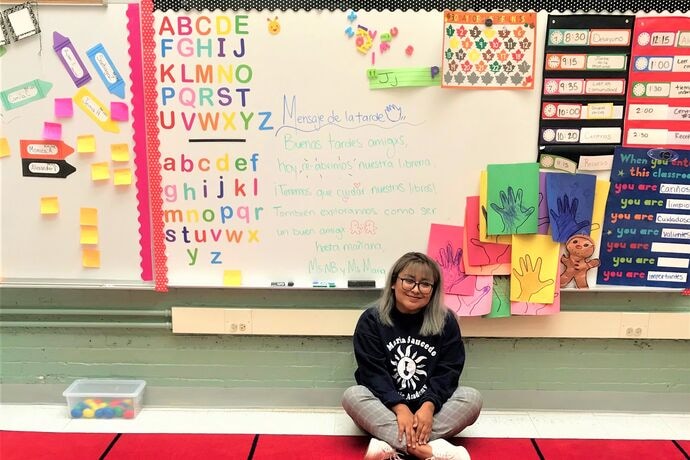My First Weeks in the Classroom Have Taught Me the True Meaning of Humility

October 3, 2019
“I don’t want to come to school today. I’m bored.”
Ouch
One of my pre-K students said that to me in front of their parents during drop off. I promised them in front of their parents they wouldn’t be bored today. They still cried and clung to their mom, with screams ringing down the hallway. As their mom pried our student’s fingers off her clothes, I was very humbled.
Nearing the end of my first month of teaching, I’m reflecting on one of Teach For America’s core values: "Act with humility." I thought I had humility down. I grew up low income, undocumented, Brown in a sea of white. Yet when I walked into my school building I never asked myself how visible those identities would be.
Maria Saucedo Scholastic Academy is in the heart of Chicago’s Little Village neighborhood and educates predominantly low-income Latinx students. Most of the experiences I lived through years ago, my students and families are living through today. The hardest part for me is that they didn’t know that.
As a 21-year-old teacher who gets mistaken for a student every day, it was new for parents to address me as “maestra.” It was new for our administrative, custodial, and food staff as well. It was just as striking to hear it and realize they were giving me a cultural respect I hadn’t earned. So I set out to earn it.
Acting with humility is an active decision that requires intensive thoughts and planned approaches. However humble your beginnings are, these never ensure your humility in the present. To be frank, I never hesitated to explain myself to people in positions of privilege and power. I am very ashamed that I did not think I had to do the same to people I considered members of my communities now that I had more structural privilege and power.
“Acting with humility is an active decision that requires intensive thoughts and planned approaches.”
It’s not enough to feel bad, though. It takes intentional relationship building, small favors, quick hellos and goodbyes, jokes, and a lot of “just call me Cristina” to melt the ice between us. It’ll take that and so much more moving forward.
From the beginning of my journey in the classroom, everyone has given me so much grace. I don’t think I would still be in the classroom without the support and understanding of coaches, peers, and my school site. Their high expectations were all clear, but there was no penalty as I tried to do my best (and failed).
Still, no one made their high expectations clearer than my students— if their bluntness didn’t make that obvious already.
During the morning meeting after my student called me boring, I asked my students to review our classroom rules. Rule #5 reads, “When I enter this class I am important.” With my student’s permission I shared that I perceived that they did not feel important because they thought class was boring. So I proceeded to add myself to our behavior chart and move myself from “Ready to Learn” to “Pause...Think About It.” I promised my students I would really think about it and if I did a better job they could move me back up.
Truthfully, if I had humility in mind I would’ve already been on the chart.
Nonetheless, I added more music, games, rhythm, dance breaks, goofy faces, and freedom into our learning. As I saw my students laugh, remember, absorb, and add to our class, I felt so guilty: There was no reason all of our days couldn’t be that way. The only reason they hadn’t been was because I didn’t ask my students what they needed.
At the end of the day, they moved me back up to “Ready to Learn” so I could earn my stamp. Now and moving forward, I’m working very hard to stay there.
Cristina Nunez-Ballesteros is a first-year corps member teaching pre-K in the heart of Chicago's Little Village neighborhood. Cristina is embracing the new challenge of teaching while tying their experiences in the classroom to larger conversations about colorism, equity, and ageism.


